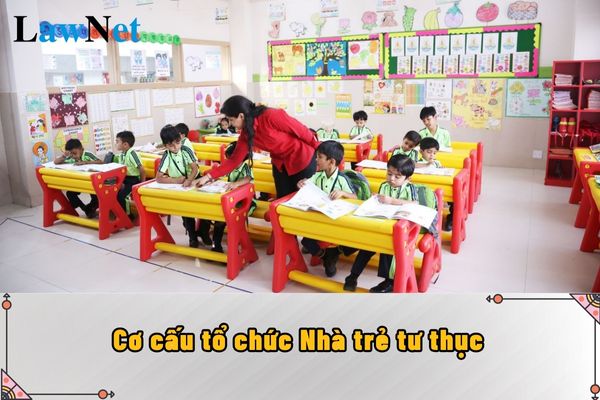What is the organizational structure and management of private kindergartens in Vietnam?
What is the organizational structure and management of private kindergartens in Vietnam?
According to Article 6 of the Regulations on the organization and operation of private preschools, issued together with Circular 13/2015/TT-BGDDT, specifically as follows:
Private schools and kindergartens have an organizational structure that meets the organizational structure requirements as stipulated in the preschool charter and is appropriate to the conditions and scale of the school, including:
- Board of Directors (if any);
- Supervisory Board;
- Principal and Vice Principals;
- Specialized units;
- Office units;
- Mass organizations;
- Groups and classes.
In which, the principal is the direct manager of the private kindergarten as stipulated in Article 13 of the Regulations on the organization and operation of private preschools, issued together with Circular 13/2015/TT-BGDDT, specifically as follows:
Principal
1. The principal of a private school or kindergarten is a person who meets the standards as stipulated in the preschool charter, is no older than 65 years old at the time of nomination, and is not an official or public employee within the state payroll.
2. The principal directly manages and operates the activities of the school or kindergarten; is legally responsible to the law, the education management authority, and the Board of Directors (if any) for organizing and operating specialty activities, ensuring the quality of nurturing, caring, educating, and operating the school or kindergarten within the scope of assigned tasks and authority. The principal’s term is 5 (five) years.
3. For private schools or kindergartens with a Board of Directors, the principal is nominated and elected by the Board of Directors through secret ballot with over 50% approval; ratified by the General Assembly of capital-contributing members, and recognized by the competent state management agency.
4. For private schools or kindergartens with a Board of Directors, besides the duties and powers stipulated in the preschool charter and the provisions in Clause 2 of this Article, the principal of private schools or kindergartens has the following duties and powers:
a) Organize the implementation of the resolutions of the Board of Directors;
b) Organize the mobilization, management, and use of resources, care activities, education, and other activities of the school or kindergarten according to regulations, ensuring quality, compliance with the law, and the plan approved by the Board of Directors to achieve the development goals of the school or kindergarten;
c) Propose organizational structure plans, staffing, and personnel of the school or kindergarten to the Board of Directors for approval; serve as the president or vice president of the recruitment council for teachers; assign, manage, evaluate, classify, commend, and discipline teachers and staff according to legal regulations after approval by the Board of Directors.
d) Prepare annual budget estimates and settlements for submission to the Board of Directors for approval; organize financial plans according to the school's or kindergarten's regulations; periodically report to the Board of Directors and related management levels on financial and activity management of the school or kindergarten;
dd) Ensure order, security, environmental protection, and safety within the school or kindergarten;
e) Have the right to attend Board of Directors' meetings (if not a member) but do not have the right to vote; are responsible for reporting to the General Assembly of capital-contributing members on nurturing and educational activities; have the right to preserve dissenting opinions against Board of Directors’ decisions and report to the direct education management agency for consideration and handling.
5. During the same period, a person is only allowed to be the principal of one private school or kindergarten.
* Note: The private kindergarten will not have a Board of Directors (Article 11 of the Regulations on the organization and operation of private preschools, issued together with Circular 13/2015/TT-BGDDT).

What is the organizational structure and management of private kindergartens in Vietnam? (Image from the Internet)
What are facilities of private kindergartens in Vietnam?
According to Article 19 of the Regulations on the organization and operation of private preschools, issued together with Circular 13/2015/TT-BGDDT specifically as follows:
- Private schools, kindergartens, child groups, and independent preschool classes are responsible for ensuring the conditions of facilities, equipment, supplies, and toys according to the provisions of the preschool charter and the regulations on equipment, supplies, and toys issued by the Ministry of Education and Training.
- Encourages private preschool education institutions to invest in modern equipment to enhance the quality of child care and education.
What are the financial operating principles for private kindergartens in Vietnam?
According to Article 20 of the Regulations on the organization and operation of private preschools, issued together with Circular 13/2015/TT-BGDDT, the finances of private kindergartens will operate on the principles of voluntary capital contributions, financial autonomy, and self-balancing of revenues and expenditures; compliance with laws on accounting policies, auditing, obligations to the state budget, and other prevailing regulations.
In addition, private kindergartens are allowed to mobilize funds in the form of share contributions, capital contributions from employees within the unit, and mobilize other lawful funds through cooperation, association with businesses, economic organizations, financial institutions, and individuals inside and outside the country.
The content of capital mobilization in the form of shares must be specified in the establishment scheme of the school.
Furthermore, private kindergartens have financial sources including:
[1] Capital contributions from organizations and individuals establishing the school and additional financial sources from the annual results of the school;
[2] Tuition fees and fees collected from learners following legal regulations;
[3] Interest on deposits at banks, the State Treasury, and credit institutions;
[4] Investments, sponsorships, aid, support, and gifts from domestic and foreign organizations and individuals;
[5] Loans from banks, credit institutions, and individuals;
[6] Support from the budget when performing tasks assigned by the state;
[7] Other lawful revenues.

